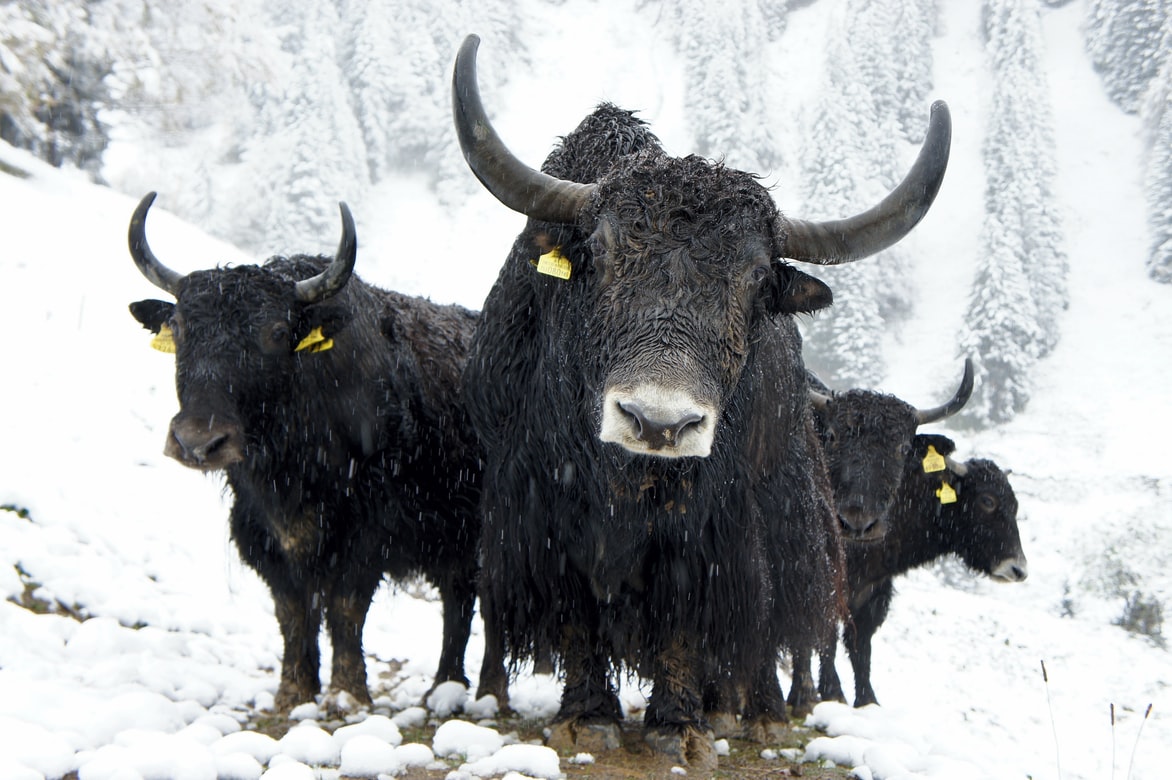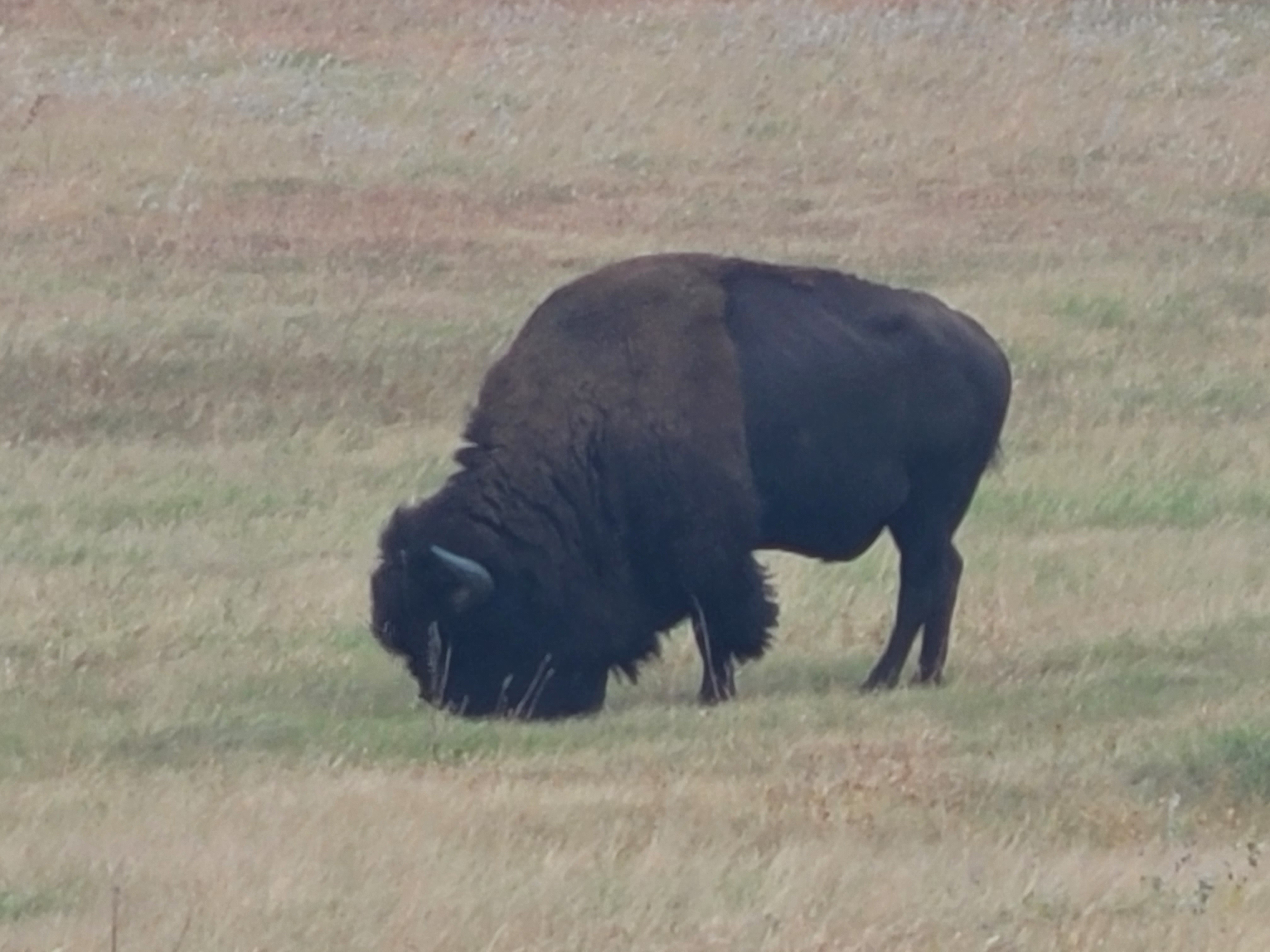Tatanka
Livestock of the Cradle of Clay
The rolling hills of the Cradle of Clay hold many stories, tucked in valleys, wandering over the soft peaks. Here amongst the storied lands, animals and people live together and serve each other, one as a blessing of the goddess Rerena and the other as a shepherd, one saved by the act of caring for another. From the largest Tante and Hillbreds to the livestock and small creatures that roam, the Clay Giants are shepherds and investors into the ways of animal husbandry.
Dedication to animal husbandry by the Clay Giants shows most in their work with the Tatanka, a massive breed domesticated and bred from the extremely large Tante that roamed the Cradle of Clay. These beasts had few enemies other than the Dinosaurs that would sometimes wander into the hills from the Great Plains to the south. For a large race like the Clay Giants, having hardy livestock that could easily take care of themselves was a necessity as these people established their place outside of the hierarchy of the Giants.
Early Tatanka were much smaller than their ancestors, often only five and a half to six feet at the withers, considerably smaller than the Tante that stood nine feet at the withers. Over the last few millennia, the Tatanka have gotten larger and more like the Tante that became extinct during the days of the Eldritch War. Breeding and raising practices hoped to make a sturdy stock that could handle the worst of days in the Cradle of Clay, something that would survive another horrendous war and feed those that needed it most. The Tatanka were the answer to the problem of old and the problem of new.
Basic Information
Anatomy
Tatanka are large creatures, with the males reaching lengths of up to eleven and a half feet from head to rump, while the females reach lengths of up to slightly over nine feet. These beasts can reach nearly seven feet tall at the withers, and a weight of over two thousand pounds in males and slightly over fifteen hundred pounds in females. Their size makes them one of the largest herbivores in Vóreios, although they are not considered prey animals by any means.
These animals have a shaggy, long winter coat, and a lighter weight summer coat that varies in shades of brown depending on the age of the Tatanka. Darker colors often denote an older creature while the lighter browns, often those similar to the dying grasses of fall, are commonly seen on calves and yearlings. This lighter color allows some camouflage from predators such as wolves that may take advantage of the smaller Tatanka.
Tatanka are known for having a thick skull and short curved horns that allow them to fight and gore most creatures that would threaten them. Their large size, horns that can grown up to two feet long, and a speed of up to thirty-five miles an hour, very few predators in the Cradle of Clay dare mess with the Tatanka, even in packs.
Additional Information
Domestication
Tante
A giant creature with a heavy, shaggy coat, the Tante were once one of the largest herbivores to roam across parts of the Northern Continent but sadly became extinct due to the events of the Eldritch War.
The Tatanka were not the first animals the Clay Giants atttempted to domesitcate for use as food when they moved to the Cradle of Clay. Smaller livestock, such as the Black Stout, were the first to be domesticated, serving as a great source of sustenance. These cattle were not necessarily large enough to provide for the large size of the Clay Giants so domestication of further animals was necessary.
The Tante were a perfect animal to be domesticated by the Clay Giants as these creatures were massive and could provide a great deal of food and other products. Standing roughly nine feet tall at the withers, Tante were one of the largest herbivores in Vóreios, but there were dangers associated with raising and keeping these creatures. The span of their horns was massive and deadly to most that dared get too close.
As time passed, it was decided to begin to bred some of the smaller Tante to create a breed that would still be large, but easy enough to handle by a single Clay Giant. Over the course of millennia, those in the Cradle of Clay worked to build their herds of smaller creatures, eventually creating the Tatanka through selective breeding. These creatures were extremely similar to their ancestors the Tante, but only stood between six and seven feet at
Uses, Products & Exploitation
While originally domesticated for a stable food source, the Tatanka have become useful for a number of goods that the Clay Giants use daily or items that are exported to other areas of the Northern Continent. The Clay Giants do not believe in waste as their time amongst the Giants made them used to living on nothing more than scraps. Over time, they attempted to find uses for all pieces of the Tatanka as it seemed to be a way to honor the goddess Rerena.
Cradle-Fed Beef is by far the most common product that comes from the Tatanka. This meat is known for its impressive marbling, a trait that stems from the variety of plantlife the animals eat. During the summer months, Tatanka roam the Cradle of Clay, grazing on a variety of prairie grasses. The winter months bring the Tatanka Roundup which means a diet of grains and minerals. This diet causes the telltale flavor and marbling that makes Cradle-Fed Beef nearly melt in the mouth and burst with a variety of flavors that can be amplified through the cooking process.
A variety of other goods are made from the Tatanka, including powder horns from the large horns of the animal that are most commonly exported to the Human Empire, bags and water bladders created from tanning and sealing organs, rugs, coats, and other clothing from the tanned hide and hair, and utensils carved
Cradle-Fed Beef
Cradle-Fed Beef can refer to meat from either the Black Stout or the Tatanka from the Cradle of Clay. While this meat is a staple of Clay Giants' diets, it is also one of the largest exports from the area other than Arcane Dust.
Tatanka
Bison
by
RiverFang
Tatanka are large creatures descendant from the giant Tante that once roamed the Cradle of Clay. Breeding efforts of the Clay Giants led to the first Tatanka.
Genetic Ancestor(s)
Lifespan
10 to 20 years
Average Height
6 ft to 6 ft 7 in at the withers
Average Weight
700 lbs to 2500 lbs
Average Length
9 ft to 11 ft 6 in without the tail
Geographic Distribution
Related Myths






Comments
Author's Notes
Enjoy the lore in this article? Discuss it in the Lore Discussion board!
Check out the other boards in the Discussion Boards and join in the discussion!